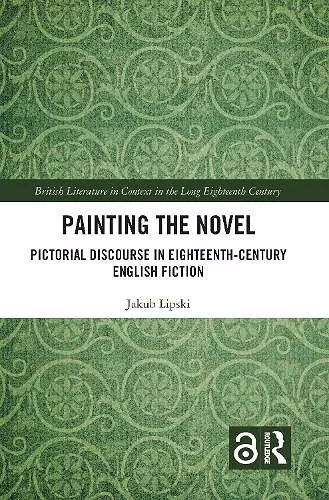Painting the Novel
Pictorial Discourse in Eighteenth-Century English Fiction
Format:Hardback
Publisher:Taylor & Francis Inc
Published:21st Dec '17
Currently unavailable, and unfortunately no date known when it will be back
This hardback is available in another edition too:
- Paperback£42.99(9780367667276)

Painting the Novel: Pictorial Discourse in Eighteenth-Century English Fiction focuses on the interrelationship between eighteenth-century theories of the novel and the art of painting – a subject which has not yet been undertaken in a book-length study. This volume argues that throughout the century novelists from Daniel Defoe to Ann Radcliffe referred to the visual arts, recalling specific names or artworks, but also artistic styles and conventions, in an attempt to define the generic constitution of their fictions. In this, the novelists took part in the discussion of the sister arts, not only by pointing to the affinities between them but also, more importantly, by recognising their potential to inform one another; in other words, they expressed a conviction that the theory of a new genre can be successfully rendered through meta-pictorial analogies. By tracing the uses of painting in eighteenth-century novelistic discourse, this book sheds new light on the history of the so-called "rise of the novel".
The Open Access version of this book, available at https://www.taylorfrancis.com/books/painting-novel-jakub-lipski/10.4324/9781351137812, has been made available under a Creative Commons Attribution-Non Commercial-No Derivatives 4.0 license.
Far-ranging and deeply researched, Painting the Novel is an essential read for eighteenth-century scholars and a must for word and image students.
Professor Peter de Voogd, University of Utrecht
The debate between realism and the ideal had been an ongoing debate in art criticism long before it entered performance and criticism in narrative fiction. Jakub Lipski’s excellent book surveys this encounter between painting and prose fiction as it played out in British fiction of the eighteenth century from Defoe to Sterne, from Fielding to Radcliffe, from more or less attempts to capture "real life" in the presentation of character to ideal figures of beauty such as Sophia Western, from the real world of Smollett’s tavern scenes to the idealised illustrations of Burney’s Evelina,and finallyto the mixture of ideally sentimentalised characters with the often grotesque landscape of the Gothic. If Hogarth and Guido Reni do not quite bookend the discussion, they play important roles. Lipski’s book appears at a time when descriptive moments in works of fiction—moments outside the flow of narrative—are drawing ever greater critical attention. His work makes an important contribution to that discussion.
Professor Maximillian E. Novak, University of California
In this admirably broad and wide-ranging study Jakub Lipski sheds new light on the relationship between the novel and the visual arts, especially painting, in the eighteenth century. Moving beyond the familiar accounts of the ‘sisters arts’ he carefully elucidates a deeper engagement, demonstrating that novelists frequently evoked the pictorial to work through and better understand their own practice in a period of generic instability and turmoil. Through a series of compelling case studies, illuminated by welcome attention to paratextual features alongside painterly motifs and explicit references, the complexity of the entanglement between the verbal
ISBN: 9780815352921
Dimensions: unknown
Weight: 362g
164 pages